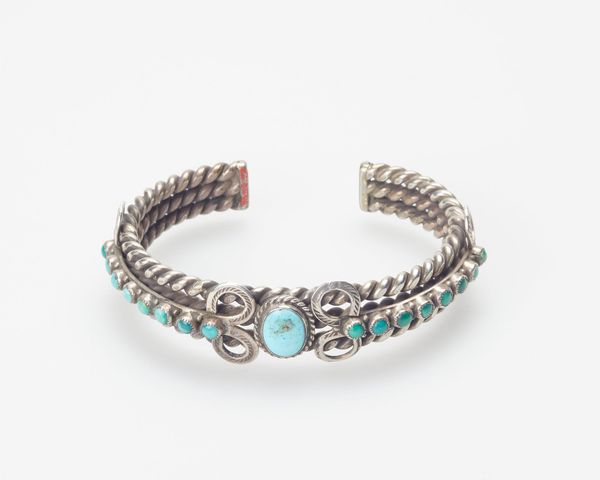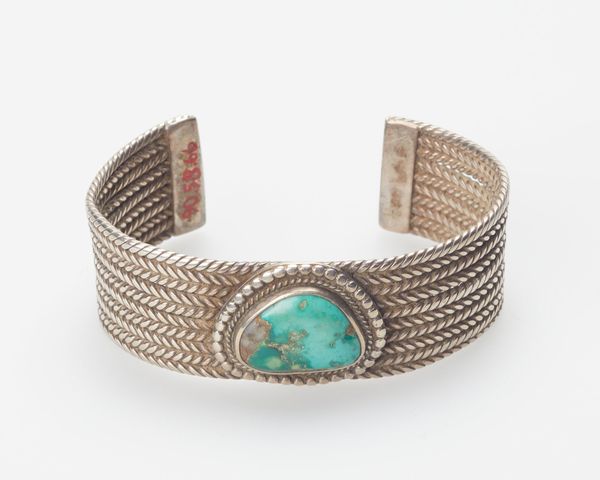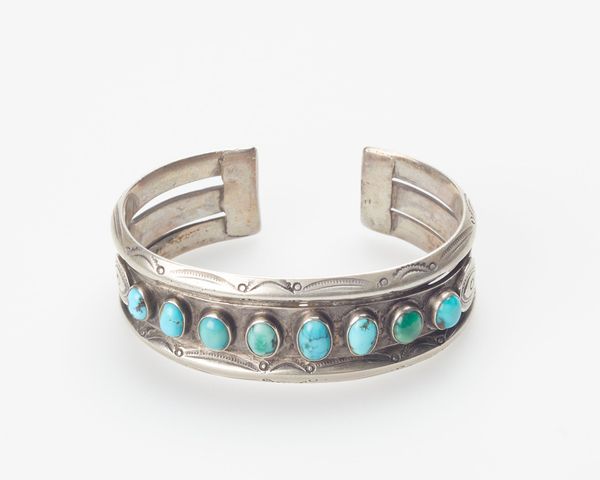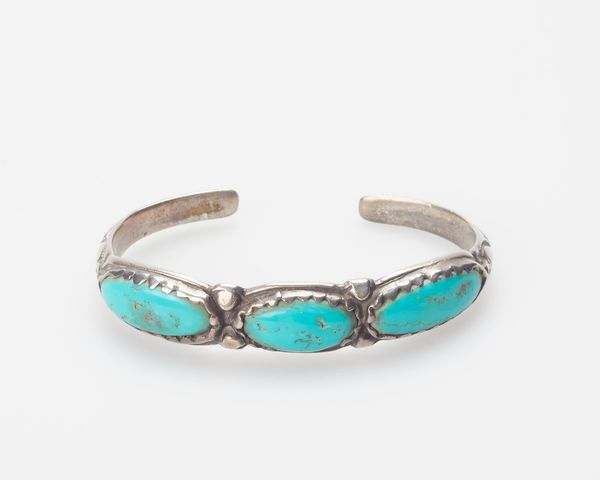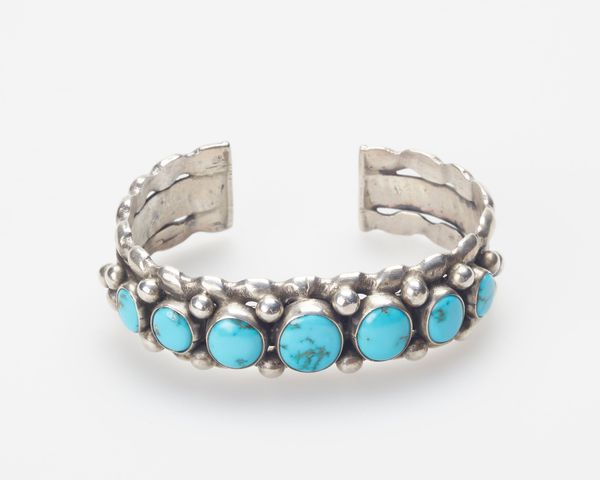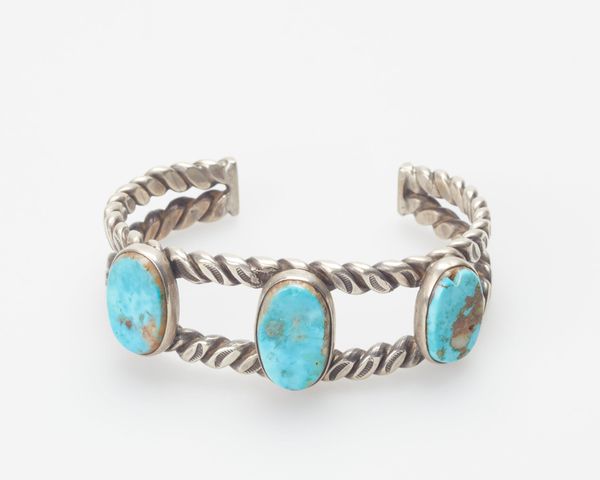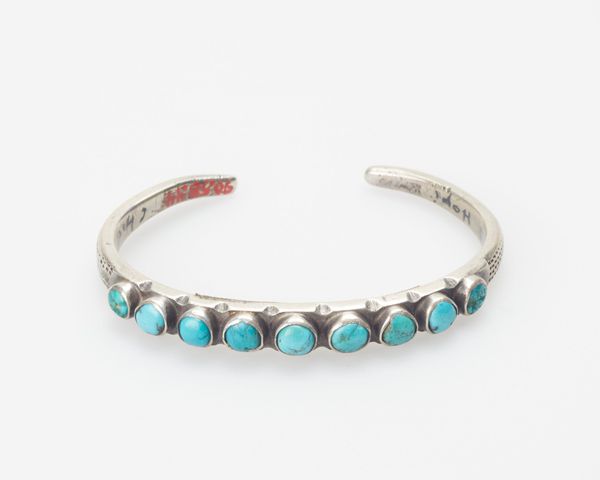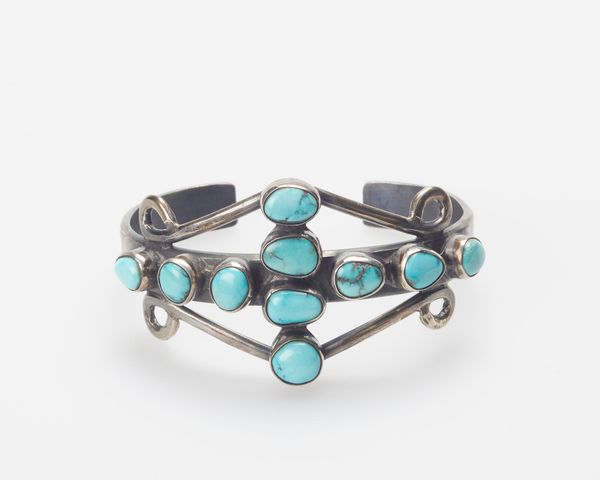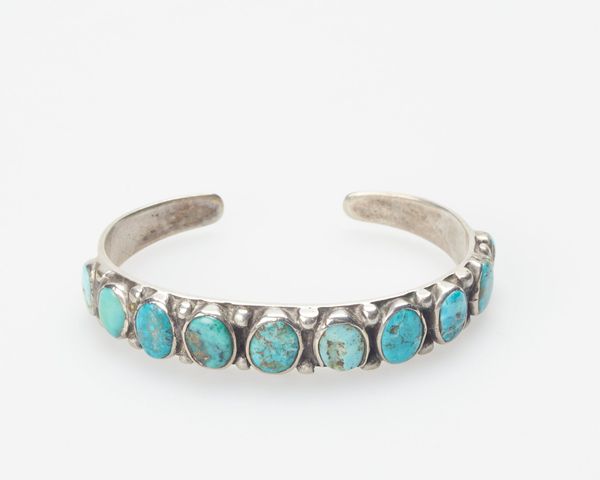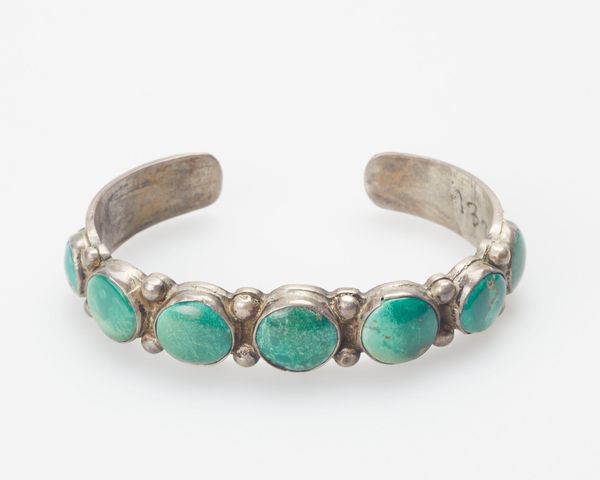
silver, metal
#
silver
#
metal
#
indigenous-americas
Dimensions: 3 1/8 x 1/2 x 1/2 in. (7.94 x 1.27 x 1.27 cm)
Copyright: Public Domain
Curator: The Minneapolis Institute of Art holds this silver bracelet made around 1900 by a Navajo, or Diné, artist. Editor: The first word that comes to mind is "resilience." Look at how the turquoise stones are set, almost like watchful eyes embedded in this piece of wearable art. There's a real sense of protection, maybe even resistance, emanating from it. Curator: Precisely! The use of turquoise is not merely decorative. Turquoise symbolizes well-being and prosperity in Diné culture, but is also employed as protection. So the “watchful eyes,” as you describe them, align perfectly with a deeper cultural significance of protection against negative forces. Editor: So, it's not just ornamentation but an active agent of well-being for the wearer. We need to contextualize that in a moment when Indigenous communities were facing tremendous external pressures. It’s not hard to read the bracelet as an affirmation of cultural identity during a period of forced assimilation. Curator: Indeed, the repetitive nature of the design could also signify continuity, mirroring the cyclical nature of life and Diné cosmology. The metal work surrounding each stone also looks like abstracted plant and animal forms, echoing traditional stories and symbols embedded in this piece. Editor: Yes, and you’re speaking to a crucial point about the period it was produced. The boarding school era intended to rip Indigenous children from their culture. These designs pushed back, affirming identity. Were these objects explicitly made as resistance, or did that aspect develop organically as they were worn and understood? Curator: I believe both could be true. There are instances when artistic creation operates as conscious cultural defense, while the symbolism provides continuous subconscious reinforcement. Its subtle messaging has a layered potency. Editor: Right. Thinking about its materiality – silver, shaped by skilled hands, and stones holding such powerful cultural memory – I think it also shows how seemingly small-scale or “domestic” art can carry profound weight. It's a tangible symbol of agency in a turbulent time. Curator: For me, it becomes a lens to see how historical memory and tradition live in and shape daily experiences and spaces through symbolism. This one piece tells an amazing story! Editor: I agree, and remembering the long shadow of colonialism, its artistic presence speaks to me today about a long tradition of resistance. It is incredible!
Comments
No comments
Be the first to comment and join the conversation on the ultimate creative platform.

